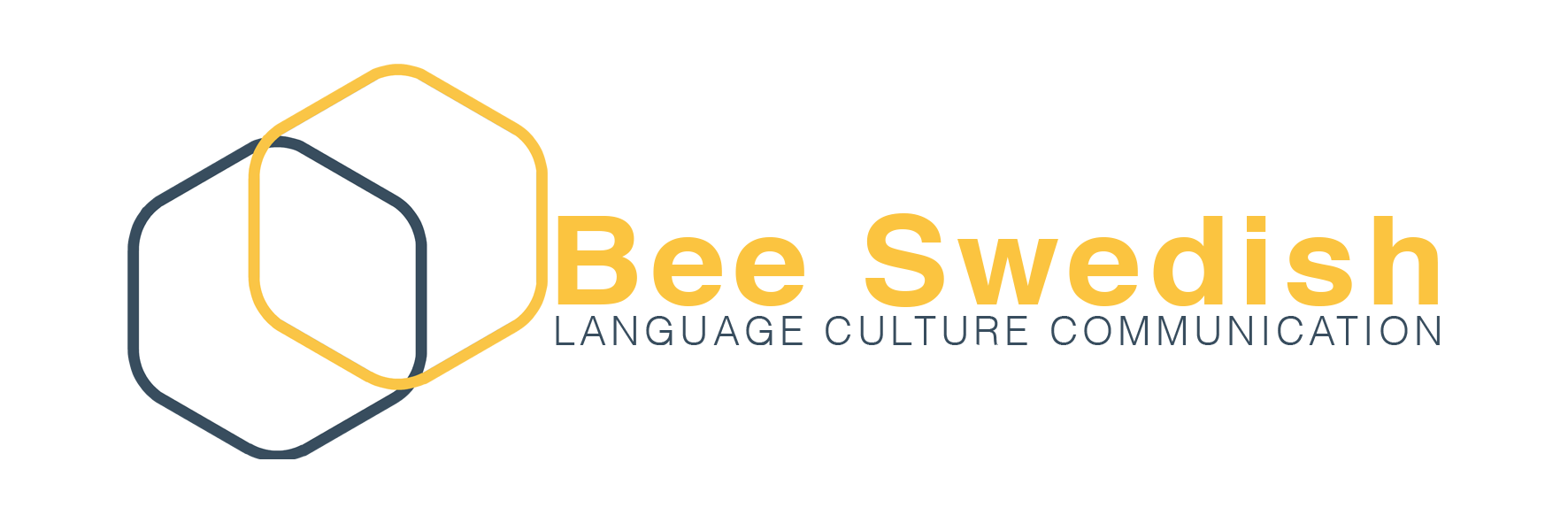Has it ever happened to you during your Swedish classes, that suddenly there are German words coming out of your mouth, although you have not said one single word in that language since you finished high school? Does your teacher tell you over and over again that you are using Spanish conjunctions in the middle of Swedish sentences? Do you remember the French equivalent when you are searching for Swedish vocabulary?
Like most language teacher, I see cases like this every day, often to the frustration and embarrassment of the learner. At first, I thought this was due to confusion, lack of sleep, poor revision skills, or sometimes even sheer stupidity. But after a while, I understood what most experience language teachers know – that most mistakes are predictable, and follow certain patterns. Understanding where these errors stem from is crucial for creating relevant exercises and give effective feedback. If there are so many learners mixing languages, there must be a reason for it.
Another language teacher, Ylva Falk, was so intrigued by this phenomenon that she decided to do something about it.
The most rational way, she believed, was to turn it into a PhD thesis, and so she did. She was particularly interested in what languages inspired mistakes in Swedish. She conducted various studies, looking at what sort of mistakes, lexical or grammatical errors, students make, when learning a new language.
She found that grammatical mistakes rarely reflect the correct structure in the learner’s first language. Instead, they seem insistently inspired by the learner’s second language. For example, learners of Swedish, whose first language is German, tend to follow rules about word order that apply to English, and not German. In Swedish and German, the verb will always be in the second position in main clauses, which can be before, or after the subject. In English, the verb always comes after the subject, regardless whether the sentence starts with the subject, and an adverb. This means that although they know German better than English, they use English as a source of reference when learning another language.
Now, a few years later, Ylva is a lecturer and researcher at Stockholm University, and she recently published a book on third language acquisition, together with a group of other researcher. Her focus is on Germanic languages. I met her, to understand more of what my students go through, and why there is a huge difference learning a second and a third language. This is a really important question in my job, as the majority of my students already speak one or more languages on top of their first language. Since I started teaching in 2008, I have taught only four people who do not speak English.
When Ylva explains the reasons behind this, it all makes sense.
Learning your first language(s) is a unique process, that cannot be re-created later in life. As a baby, you start paying attention to the sounds around you, imitating what you hear, then slowly picking up words and using them according to your own understanding. It is a somehow organic process, that goes alongside thinking in itself, and exploring the world around you.
Learning a second language is a completely different process. This often takes place in a classroom environment, and you already have your first language(s) to refer to. You can translate words, concepts, sentences. You are already able to read and write, and integrate this alongside – or sometimes prior – to listening and speaking. You construct tables, diagrams, you use grammar as a tool for organising and implementing rules. You revise, and you are being tested. You are conscious of the learning process. According to Ylva, not the same part of your brain that took care of your first language is active in this process.
Definitions
You might think that the definitions of a first, second and third language are very simple, just referring to the chronological order you learn languages. Reality, and academia, is however much more complex. Roughly speaking,
L1 – first language. The language or languages you learn as a child, picking it up as you go along. Commonly referred to as native language.
L2 – second language. The first language you learn in a classroom. Never your first language. Taught with some structure. Dependent on what language you are studying right now, this could be the other language(s) you have learnt.
L3 – third language. Another language you learn, that is not your L1. When learning L3, you are referring to what you learnt about language learning when learning L2. It could be your third, fourth, sixteenth, in some cases the second. If you learn two or several languages in parallel, L3 is what you are studying right now.
The core of all of this, is that when learning a third language, you will use the same strategies as when you learnt a second language. That same part of your brain is being activated. Consciously and subconsciously, you will recognise learning situations and how you have solved problems in the past. Probably, you will even refine them. But as you re-use old methods, some residue appears; a word from another language, a word order that does not belong to L3.
This effect seems to depend on several factors
Naturally, the typological similarities between your second and third languages will impact how much transfer you will be the victim of. So does your competence in both languages. The more you know of your second, and the less you know of your third languages, the more will your third language be impacted by your second. According to studies, actuality should also play a significant role, although in my personal experience, I cannot relate to this.
The system is plastic.
For example, although Swedish is my first language, and I learnt as a child, I have spent so many years teaching it, that it has somehow ‘moved’ into the part of the brain that is in charge of L2 and L3. When I am teaching it, I am well aware of it in a conscious way, and I can control according to the pedagogic outcomes I am after. For example, I am very careful only to speak in the present tense with beginners that have not yet learnt the past tense. I do think about choosing nouns from different groups when practising the plural form with my students. But outside the classroom, I speak without thinking, and again my L1 brain is activated.
In contrast, English is my second language, but it was a long time ago that I thought of it in a conscious manner. I spent seven years living in the UK, and I speak English at home. I would say I am quite an advanced user, but I would not be able to explain a simple grammatical question if asked. English has been transferred to the L1 part of my brain.
What consequences does this have for learners of a third language?
I ask Ylva if there are any tricks that come with this – if it is possible for learners to outsmart their own brains and use this to their advantage. She says no. It is actually rather annoying, and frustrating, and there is not much you can do about it. However, just being aware of the fact that it is ‘normal’ to start speaking the ‘wrong’ language, can be a relief for many, and she recommends students not to be too harsh on themselves.
It is also important not to stick too much to your principles, but to be pragmatic when it comes to learning techniques. If you feel more confident thinking in English when learning Swedish, although your native language is Russian, Korean, Arabic, or Spanish, this is maybe a symptom of your brain taking a rational decision. Perhaps it is is easier for you to translate into another language than your own. Then, do so. I have seen many of my students using English-Swedish dictionaries although their first language is not English. Most of the time, this is because they are not able to find a dictionary translating Swedish into their own language, but for learning purposes, this might actually be an advantage.
It should matter for teachers, though.
After this talk, Ylva has convinced me that there is not enough emphasis on the difference on second and third language acquisition, in teaching practice. Much course literature is developed to address learners of Swedish as a second language, although the majority of learners of Swedish already speak one or several languages on top of their native tongue. Teachers are trained to teach Swedish as a second language, regardless of the students’ previous language learning experiences. When creating different groups for SFI, it is not considered important how many, or which, languages students have learnt prior to Swedish.
Ylva’s Phd Thesis ‘Gingerly studied transfer phenomena in L3 Germanic syntax – the role of the second language in third language acquisition’ investigates the role of second language for third language syntax. Ylva is the co-editor of the book Tredjespråksinlärning (2016) ed. Camilla Bardel, Ylva Falk, Christina Lindqvist). Most of it is in Swedish, unfortunately perhaps, but there are two chapters in English. I have a (signed!) copy in my office, if anyone would like to have a look.

